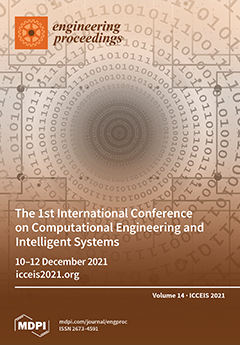Eng. Proc., 2022, ICCEIS 2021
The 1st International Conference on Computational Engineering and Intelligent Systems
Online | 10–12 December 2021
Volume Editors:
Abdelmadjid Recioui, University of Boumerdes, Algeria
Hamid Bentarzi, University M’hamed Bougara Boumerdes (UMBB), Algeria
Fatma Zohra Dekhandji, University M’hamed Bougara of Boumerdes, Algeria
- Issues are regarded as officially published after their release is announced to the table of contents alert mailing list.
- You may sign up for e-mail alerts to receive table of contents of newly released issues.
- PDF is the official format for papers published in both, html and pdf forms. To view the papers in pdf format, click on the "PDF Full-text" link, and use the free Adobe Reader to open them.




